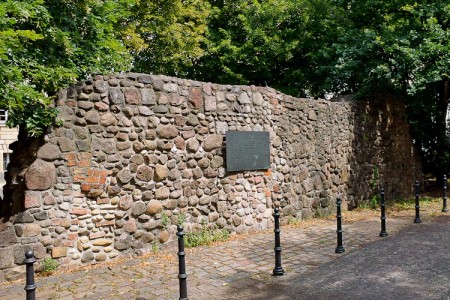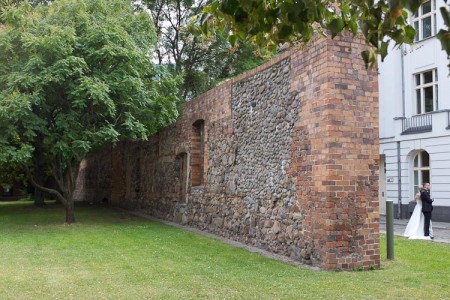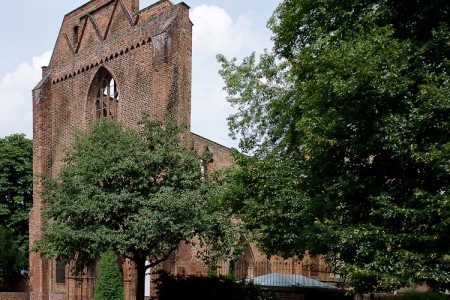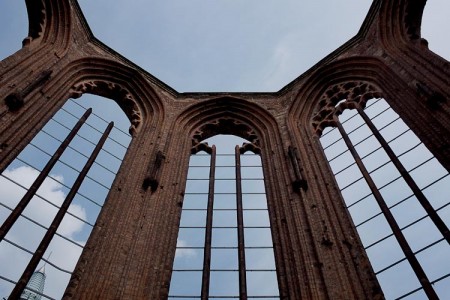
This year Berlin celebrates its 777th anniversary, but unfortunately there is not much left that reminds us of the medieval period of the city, such as the original street structure. Berlins streets are relatively broad and I sometimes really do miss these narrow streets where pedestrians, bicycles, and cars have to dance around each other in order to get to where they want. The Nicolaiviertel is the old centre of the city, but after the 2nd world war there was no more left than the ruins of the Nicolai Church and today this touristic area is mainly the result of a major socialistic restoration in 1987. I’m always happy when I walk through an old alley with remnants which are older than, say, 300 years. One of them is the Waisenstrasse (litt. orphansstreet), a peaceful alley which is hidden between the Littenstrasse and the Klosterstrasse.

Town Wall
Berlin is famous for its wall, which was built around West Berlin in 1961 to stop the unsatisfied citizens from fleeing out of the GDR. It was torn down 25 years ago, an historic event which will be celebrated and commemorated intensely in the coming months. However, this was not the only wall in the history of Berlin.
The first Berlin wall was actually built in the 13th century. The city originated from the two settlements: Berlin, which was roughly the area between the Spree, the Littenstrasse at the east side and the Rochstrasse at north side, and Cölln, which was the southern part of the Museum Island. One single town wall surrounded both parts, in order to protect its citizens, instead of keeping them inside. The wall remnants which can be found in the Waisenstrasse date from the 14th century, when the original wall had been rebuilt. Because of the expansion of Berlin and Cölln, the original wall lost its function and most of it was torn down and re-used as building material. The small sections of this wall in the Waisenstrasse survived because they were incoporated into houses which were built against it. Since 1948 these remains have a monumental status.

Zur letzten Instanz
One of the few remaining houses that adjoined the old town wall, is used by the oldest restaurant in Berlin. Restaurant Zur letzten Instanz was established in 1621 and has been located at the same spot for almost 400 years, although the current housing was rebuild in 1963. It is said that Napoleon dined here during one of his European trips. I wonder what the Frenchman thought of the traditional Berlin cuisine. It is a cosy restaurant, still serving traditional Berlin food, and in summer you can eat or have a drink on the quiet and pleasant terrace.


Franziskaner Klosterkirche
When you walk a little bit further along the Waisenstrasse you end up at the ruins of the Franciscan Friary Church. The early-Gothic church and the friary were built in 1250 just after the settlement of Berlin in 1237.
After the Reformation, when the friary was closed, the building was used for several other purposes such as a laboratory. Also, the first printing office of Berlin was located here. From the 16th until the 19th century it housed a famous grammar school at which, among others, Karl Friedrich Schinkel, Otto von Bismarck and Erich Rathenau graduated. The complex survived for a long period, until it was bombed during the Battle of Berlin at the end of the 2nd world war. The friary was demolished and turned into a public garden, the ruins of the church were kept and are gradually being reconstructed. Today, the ruin is used as an exhibition space for sculptures and cultural events.



More information
U2 Klosterstrasse U6 S5 S7 S75 Janowitzbrücke
Zur letzten Instanz, Waisenstrasse 14-16, Berlin-Mitte
www.zurletzteninstanz.com
Franziskaner Klosterkirche, Klosterstrasse 73A, Berlin-Mitte
www.klosterruine-berlin.de